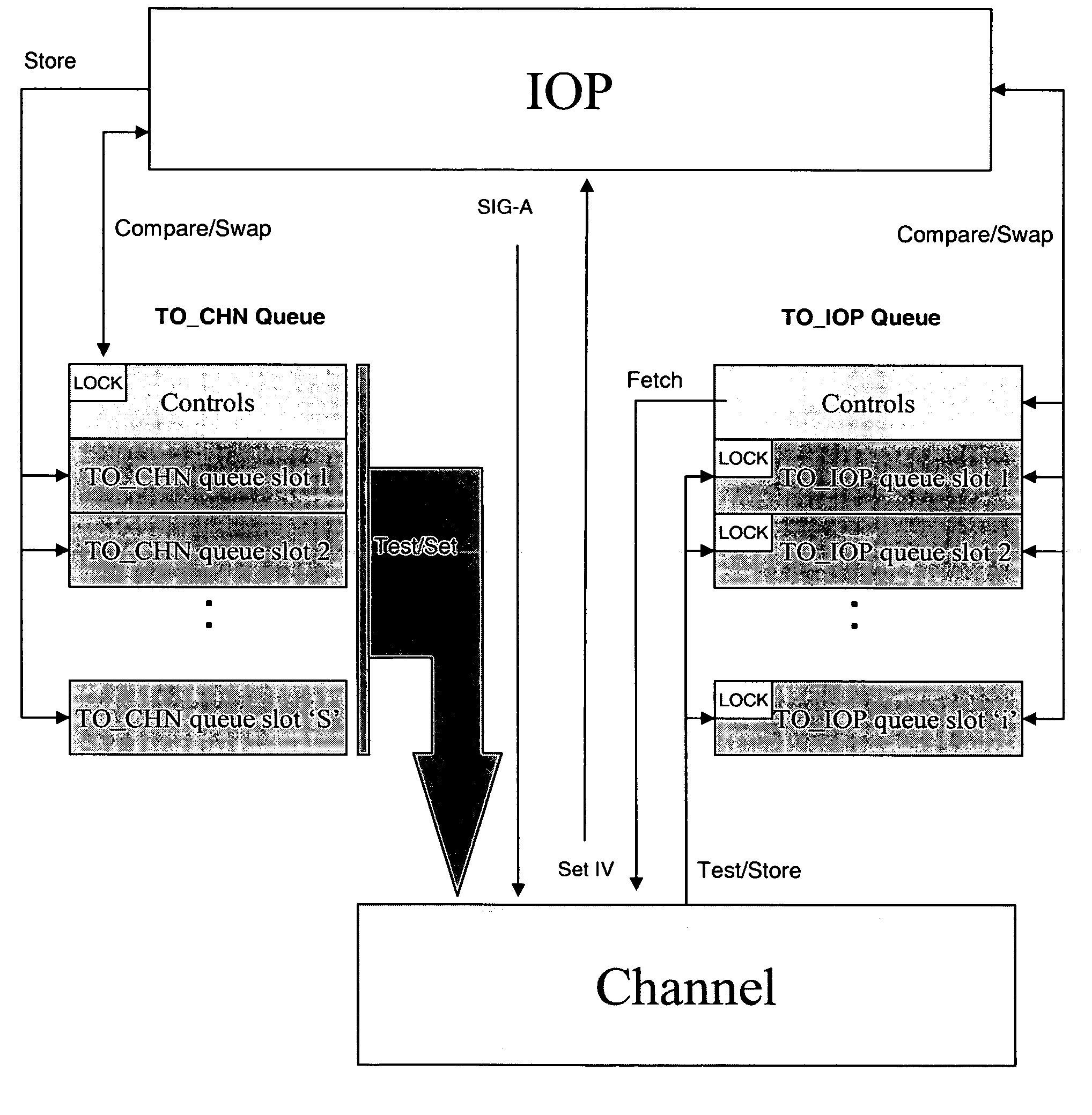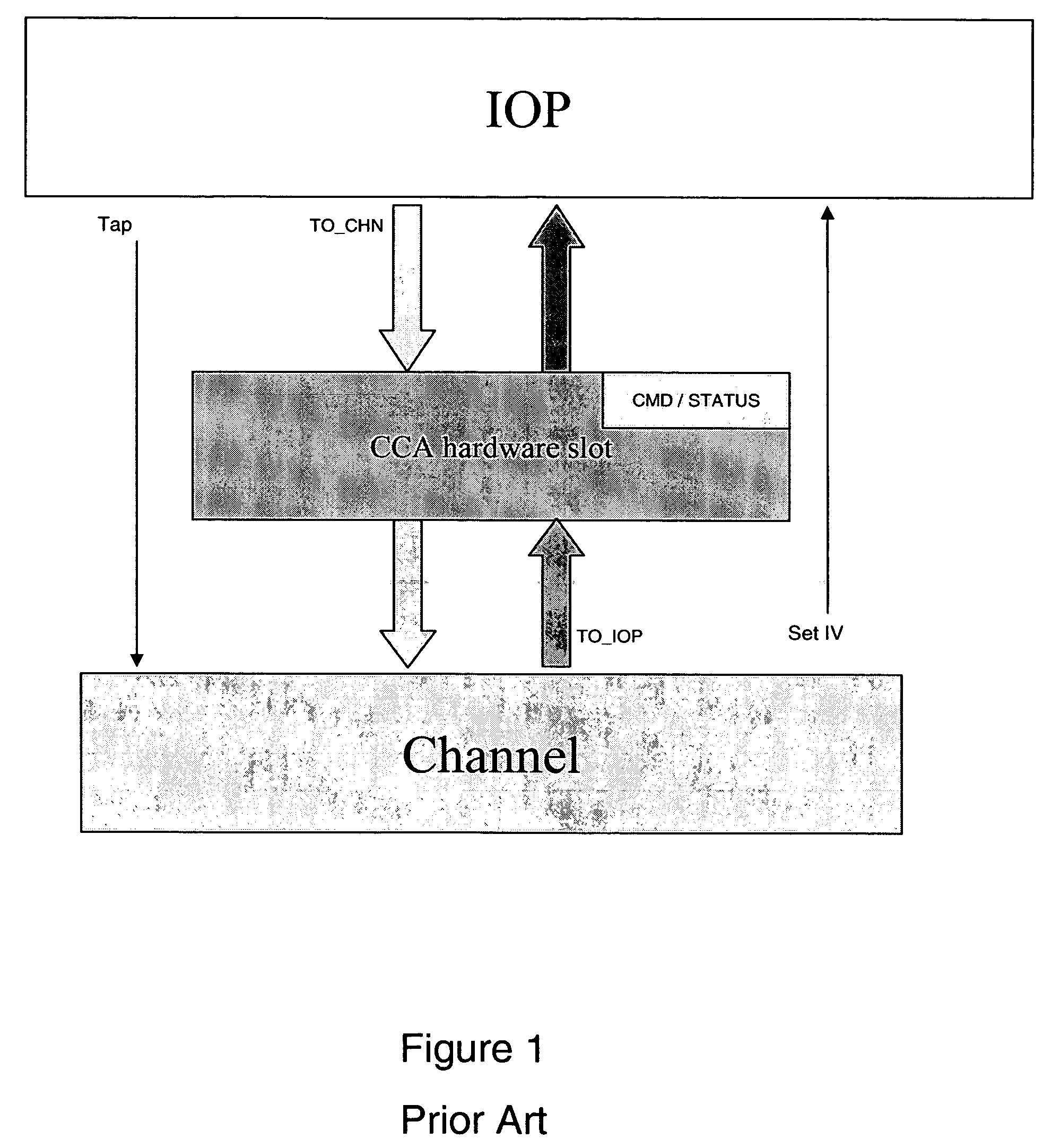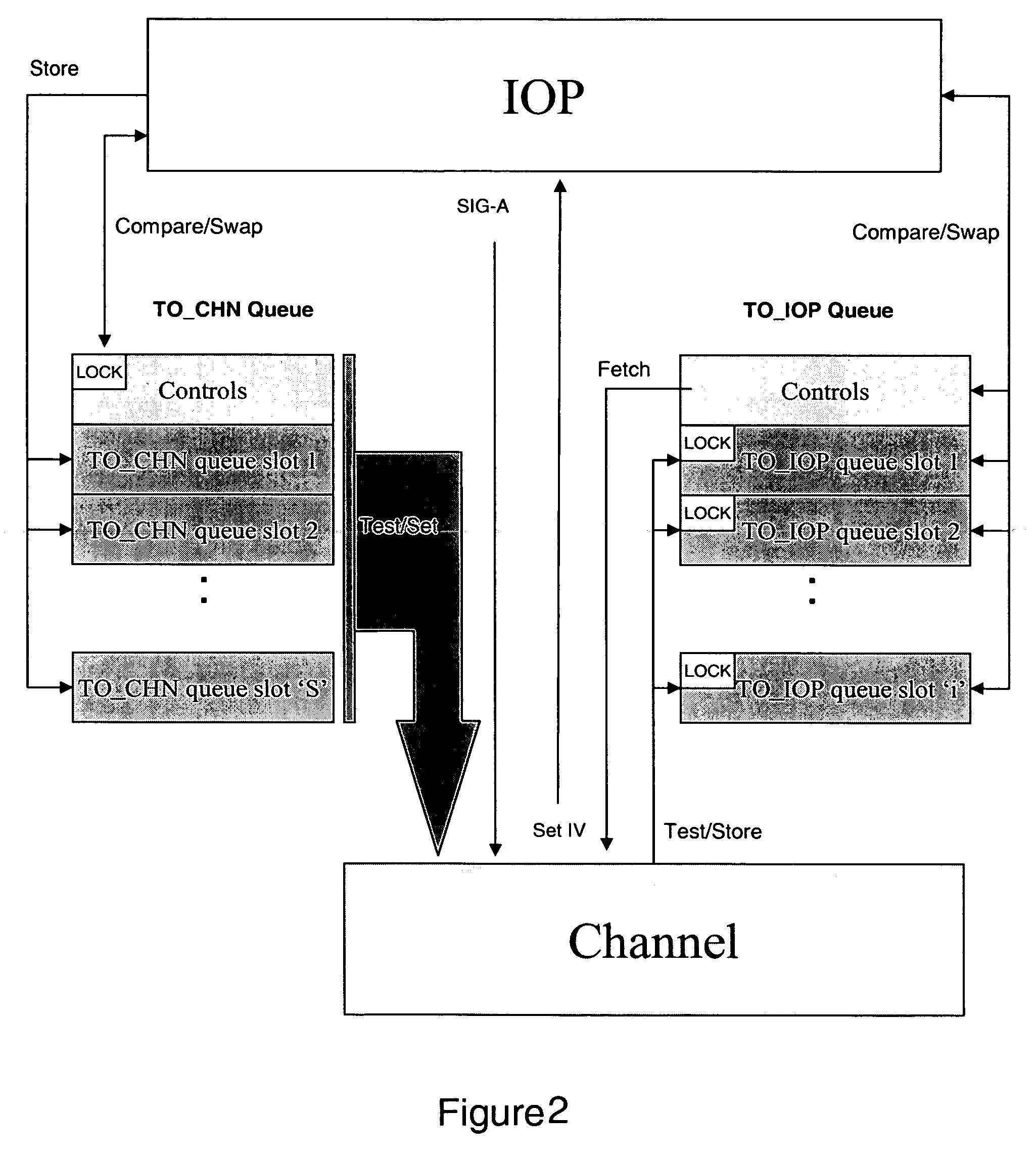Channel communication array queues in hardware system area
a hardware system and communication array technology, applied in the field of data processing apparatus, can solve the problems of increasing the ratio of cca busy responses to actually successful cca writes, and achieve the effect of high performance iop/channel communication and high start subchannel (ssch) instruction ra
- Summary
- Abstract
- Description
- Claims
- Application Information
AI Technical Summary
Benefits of technology
Problems solved by technology
Method used
Image
Examples
Embodiment Construction
[0031]With reference to FIG. 1, there is shown a prior art CCA, a hardware array, one per channel. A way to communicate between the Central Electronic Complex (the machine itself) and the channel is the CCA. The CCAs provided a method to signal the channel to go look for new work, to do work, or for the channel to say it had completed work. Information is passed through the CCA, an 8 byte slot, for each channel. The IOP, when writing to one specific channel, supplies a hardware address of the CCA slot and data. The CCA hardware slot is a slot in an array of slots. The hardware and millicode would write the data into the slot and the IOP writes the CCA and taps the channel, identifying to the CCA the specific channel mapped. Typically, a CCA is dedicated to the specific channel and when a channel is plugged into a specific slot in a machine it is connected to a specific CCA. In most systems there can be one to sixteen IOPs but there could be a thousand channels.
[0032]There's a comman...
PUM
 Login to View More
Login to View More Abstract
Description
Claims
Application Information
 Login to View More
Login to View More - R&D
- Intellectual Property
- Life Sciences
- Materials
- Tech Scout
- Unparalleled Data Quality
- Higher Quality Content
- 60% Fewer Hallucinations
Browse by: Latest US Patents, China's latest patents, Technical Efficacy Thesaurus, Application Domain, Technology Topic, Popular Technical Reports.
© 2025 PatSnap. All rights reserved.Legal|Privacy policy|Modern Slavery Act Transparency Statement|Sitemap|About US| Contact US: help@patsnap.com



